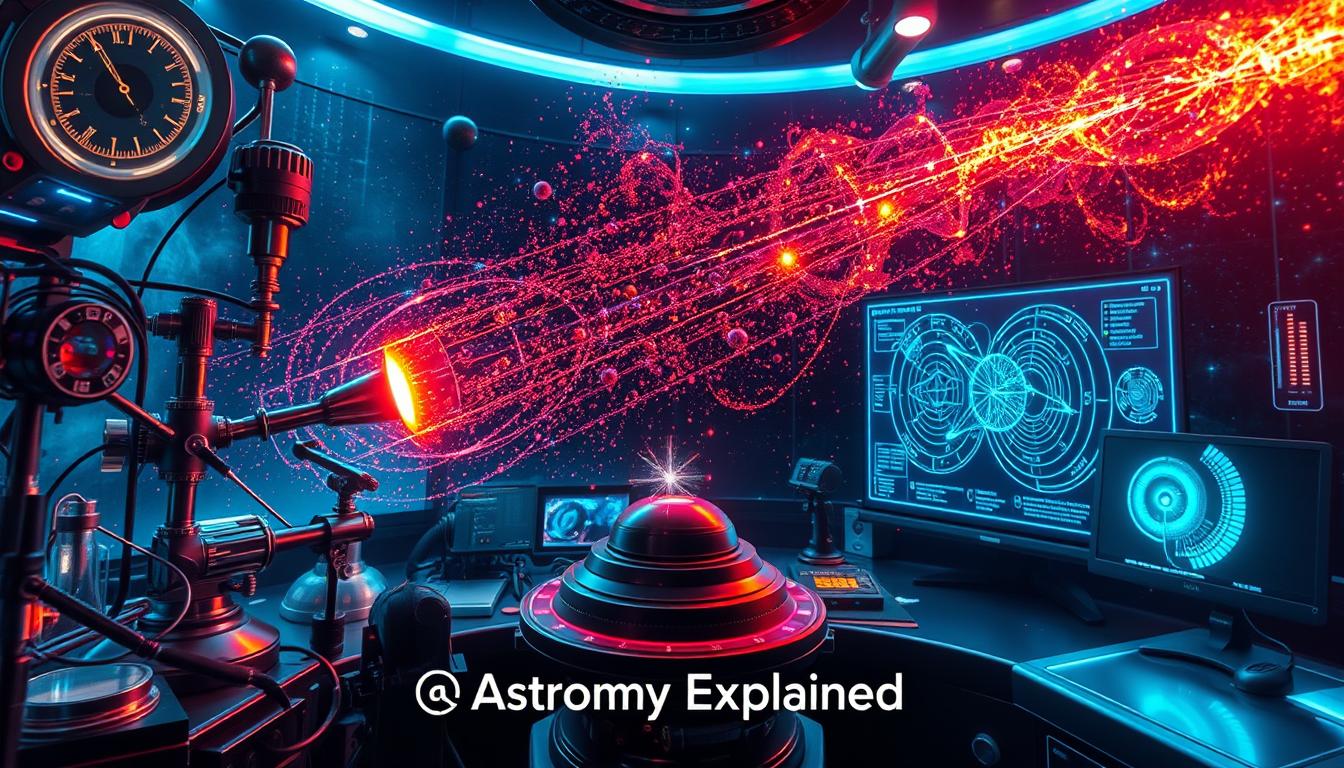Imagine a world where 85% of its mass is invisible. This isn’t from a sci-fi movie—it’s real in our universe, it’s dark matter. It’s invisible, and we don’t know how to detect it. None of the direct detection experiments have found anything so far. That’s why we still don’t know how to detect dark matter directly or indirectly.
Trying to detect dark matter is like trying to hear a whisper in a busy city. Many groups, organizations, and scientists are trying to find the first direct or indirect glimpse of dark matter. For example, DarkSide-20k uses 50 tons of liquefied argon to detect dark matter. This team has over 400 members. They’re funded by a $530,000 grant from the National Science Foundation.
Another team is studying tantalum-180m underground, funded by a $100,000 award. These groups use a variety of different methods, like using gravitational lensing and X-ray emissions, to find these clues. None of them is the direct answer to how to detect dark matter, though. At least for now.

Gravitational Clues to Dark Matter Detection
With this information, are you wondering how we can find what we can’t see? We can’t see it, but we know it’s there because of how it affects things we can see. It makes galaxies spin faster than they should, giving us clues about its presence. The cosmic microwave background (CMB) could be one of the keys to finding and detecting dark matter. The CMB is leftover heat from the Big Bang. It shows us where matter was in the early universe. Scientists use special tools to look at the CMB’s tiny changes, and this tells us about dark matter’s pull.
Evidence from the Cosmic Microwave Background
The cosmic microwave background helps us find dark matter in a special way, but is there evidence yet? As CMB photons move, they bend around the dark matter. This bending is a sign of dark matter’s gravitational effects. That’s why when we look closely at the CMB, there can be that direct dark matter evidence we’ve been looking for years. One important thing, though, is that CMB supports the idea of dark matter. However, CMB is huge and it is going to take a while to find that little glimpse of the gravitational effect that dark matter leaves.
Emerging Theories and Technologies in Dark Matter Detection
While we are exploring how to detect dark matter, emerging theories in dark matter and new technologies that support the detection is extremely important. One new finding can give us direct proof of dark matter. A recent idea is that axions, tiny particles, might gather around neutron stars. They could turn into light when the stars’ magnetic fields affect them. But we don’t have the technology to directly see this. If we can actually see this, we may see dark matter in the process, too.
The Large Xenon (LZ) detector is at the heart of dark matter research technologies. It’s deep in South Dakota’s Sanford Underground Research Facility. This detector has 14,000 parts, including two tanks filled with liquid xenon. It uses special photodetector arrays to find dark matter signals. By 2028, it aims to collect over a thousand days of data. Recent breakthroughs focus on precision, not just size. Quantum sensing can detect dark matter interactions with an absorber. This method can spot events at very low energy levels, down to the keV range.

How to Detect Dark Matter with Experiments
We try to detect dark matter through experiments. As you might have already realized, we don’t know how to detect dark matter directly or indirectly, so we need to try. Try in different ways, methods, and technologies. We need very sensitive and precise methods to find it.
Large-Scale Experiments
Large-scale experiments for dark matter have made big strides in solving its mystery. The LUX-ZEPLIN (LZ) project, a global effort, uses 10 tonnes of liquid xenon to search for dark matter. It works hard to find signs of dark matter, especially WIMPs. After 280 days, the LZ found more about where dark matter isn’t than where it is. But, it’s hopeful for the future. With more data, it might make major discoveries. There is also a theory that primordial black holes can be dark matter – although it’s a theory, large scale experiments like this can shed light on dark matter and black holes issue, too.
Underground Labs
Underground laboratories in dark matter research are extremely good because they are far away from all the noise. They’re like underground bunkers, away from cosmic noise. This makes them perfect for finding dark matter’s faint signals. Places like HAYSTAC use cool tech to find axions, a dark matter candidate. They work in super-cold places and use special noise-reducing tools. These and many other experiments to detect dark matter mix theory, engineering, and a bit of luck.

Direct and Indirect Detection Methods
If we want to prove something exists, whether dark matter or another matter or something else, we need to detect it. The best way to do it is to directly detect it. Imagine how you see a table in a room – you know it’s there because you see it. If you can’t see it, you need to indirectly detect it by touching it, knowing where it is, and feeling it. We try to do either of these with dark matter. There are direct dark matter detection methods and indirect dark matter detection methods.
Direct Detection
Direct detection is the best way to prove dark matter exists. Researchers use special detectors to try and catch dark matter particles. These detectors are very sensitive and are made of materials like high-purity germanium or liquid xenon. They look for the rare interactions between dark matter and regular matter. Finding these interactions is hard because they are so rare. But detectors like those made of high-purity germanium can detect even the smallest signals. So far, we couldn’t detect any – despite a lot of try-outs. This may mean that either we are wrong and these detectors aren’t good enough to detect the smallest signals, or dark matter doesn’t interact with regular matter at all. It’s a good food for thought. Are we wrong, or do we need to get lucky?
Indirect Detection
For indirect methods of detecting dark matter, scientists look for signs of dark matter’s presence through other things. They search for gamma rays and other particles that dark matter might create when it interacts with itself. We call this dark matter annihilation, and it can be a great way to understand how dark matter interacts and how we can directly detect it. Researchers at Clemson University are studying dwarf galaxies for signs of dark matter annihilation. If they find high-energy gamma rays, it could be proof of dark matter’s existence. The indirect method of dark matter detection is the only way to understand how we can detect dark matter directly.

Conclusion
Detecting dark matter is one of science’s hardest puzzles. Most of the universe’s mass is invisible, and we don’t know how to directly detect it. It’s so frustrating and exciting at the same time. There are experiments like LUX-ZEPLIN and DarkSide-20k trying to spot dark matter particles, but we don’t have any direct or indirect proof of dark matter yet. Direct detection methods use special materials to catch these rare interactions, but so far, they’ve found nothing. This may mean dark matter doesn’t interact with regular matter, or our tools aren’t precise enough yet.
Indirect detection looks for clues. Scientists study gamma rays, X-rays, and gravitational lensing to track dark matter’s effects on visible objects. Observing dwarf galaxies or the cosmic microwave background shows how dark matter bends light and pulls on stars. These methods don’t find dark matter itself but help us learn more about its behavior.
We are going to be trying to detect dark matter for a very long time, as I see. Even though we have some discoveries on how to detect dark matter, we are still far from real proof.
FAQ
What is dark matter, and why is it hard to detect?
Dark matter is a mysterious substance making up about 27% of the universe. It’s hard to spot because it doesn’t reflect light. We know it’s there by how it affects other things in space.
How do gravitational clues help in the detection of dark matter?
Gravitational clues show dark matter’s presence through galaxy rotation and lensing. These effects can’t be explained by just visible matter. They hint at an unseen mass pulling on them.
What role does the cosmic microwave background play in detecting dark matter?
The cosmic microwave background (CMB) is like a photo of the universe’s early days. It shows temperature patterns that tell us about all matter, including dark matter. The CMB’s details suggest there’s more mass than we can see.
What emerging theories are there for detecting dark matter?
Theories like axions and Weakly Interacting Massive Particles (WIMPs) are being explored. Axions are light particles that might be dark matter. WIMPs could leave behind antiparticles when they decay.
What types of experiments are used to detect dark matter?
Scientists use big and small experiments. Space missions like the Alpha Magnetic Spectrometer and underground labs are key. They aim to catch dark matter particles or their decay products.
How does direct detection of dark matter work?
Direct detection tries to spot dark matter’s rare interactions with normal matter. Detectors on Earth look for signals from dark matter particles colliding with atoms.
What about indirect detection methods?
Indirect methods search for dark matter’s byproducts, like gamma rays or neutrinos. These signs could show where dark matter is, helping us understand it better.